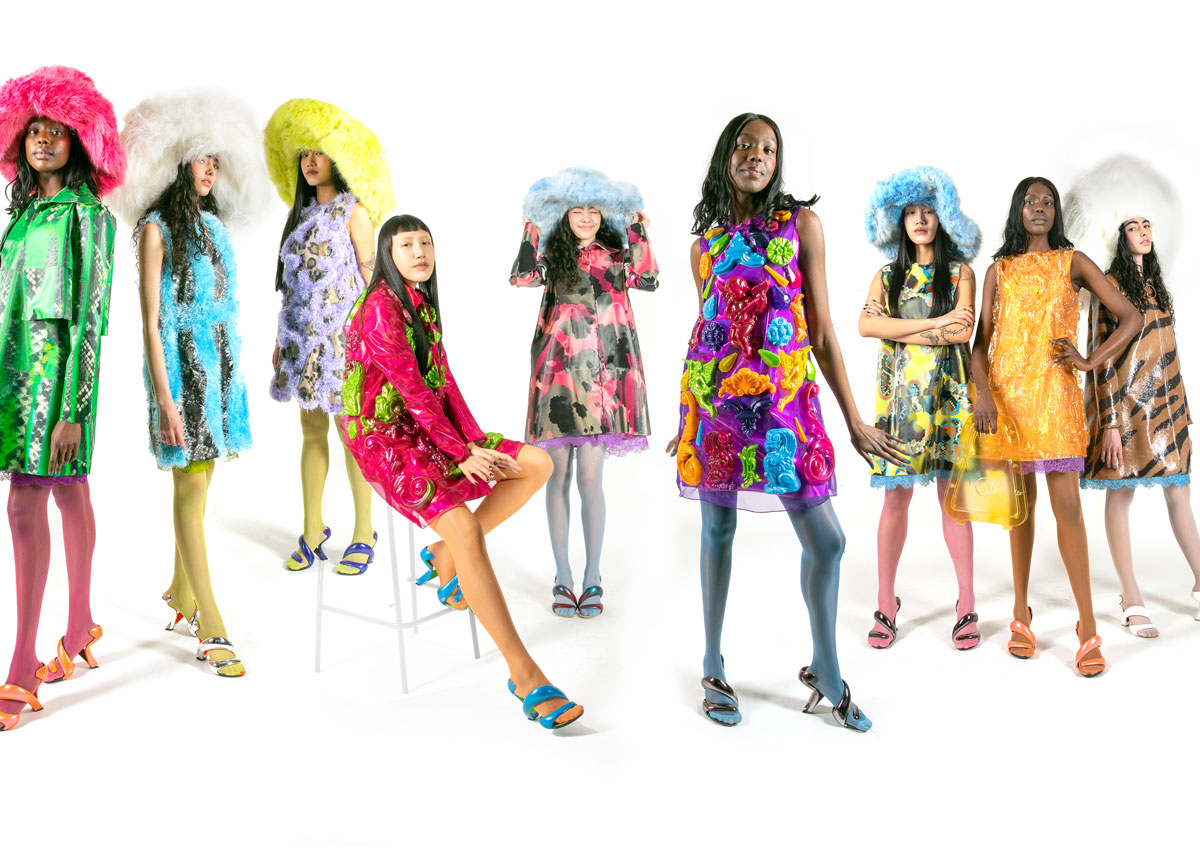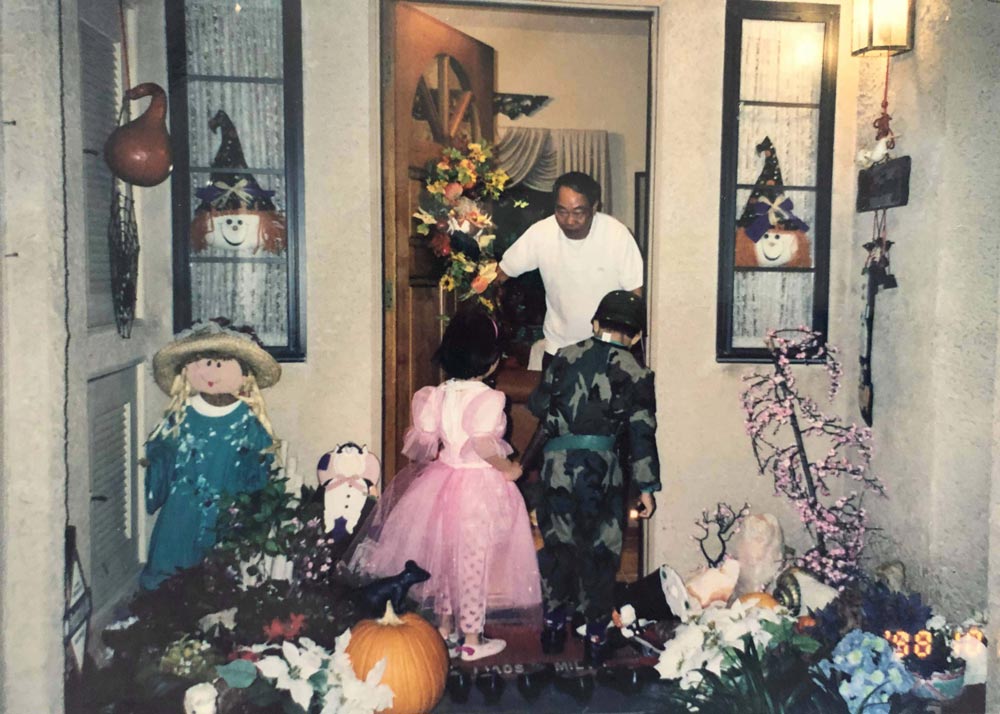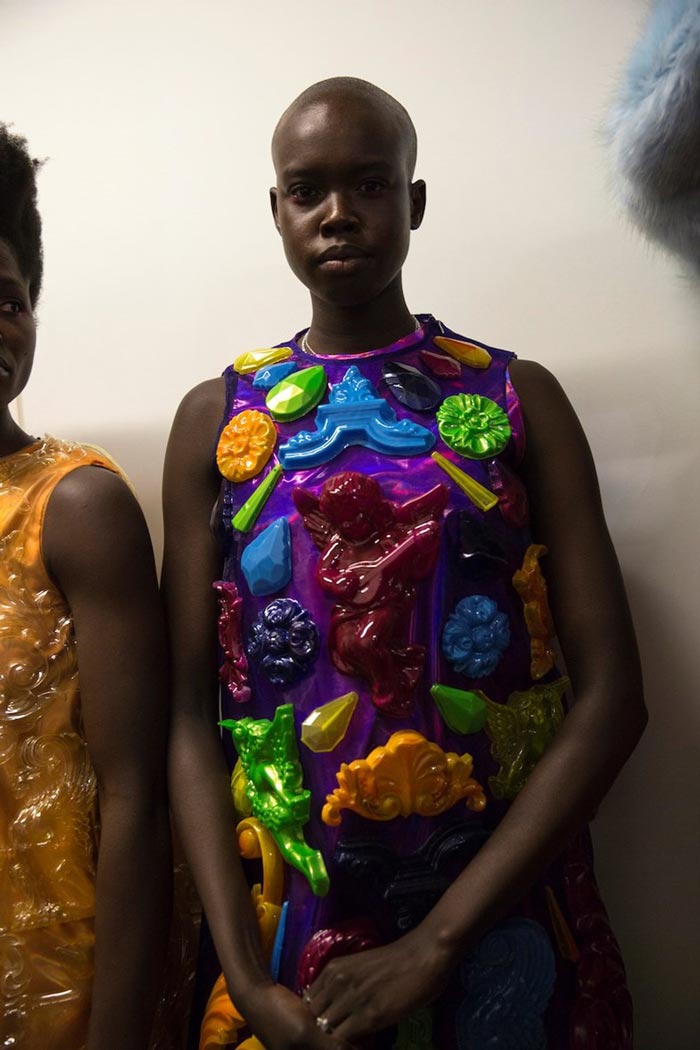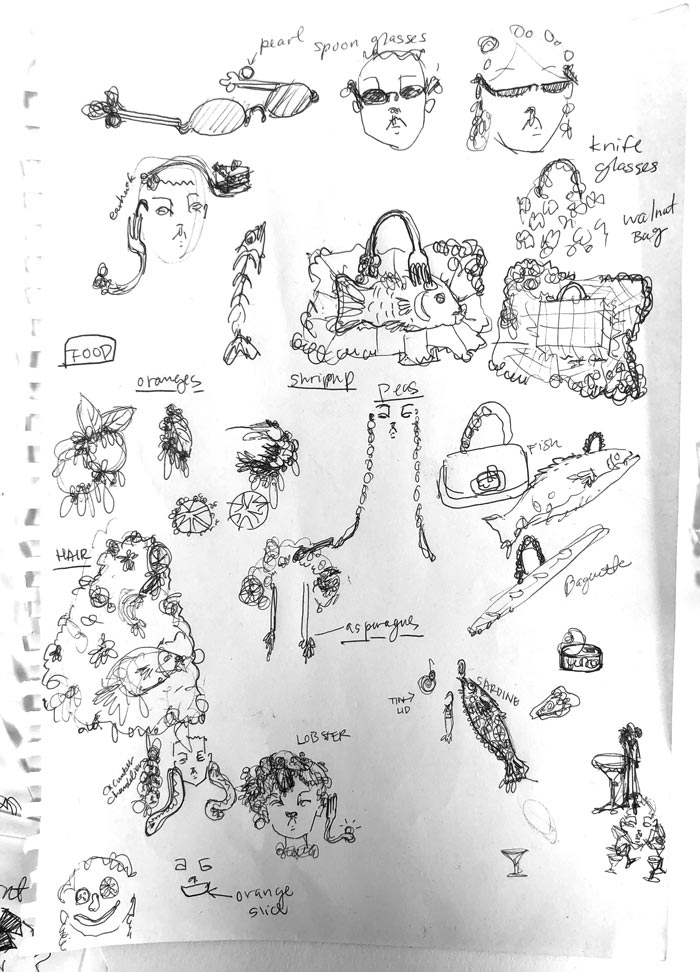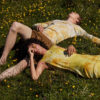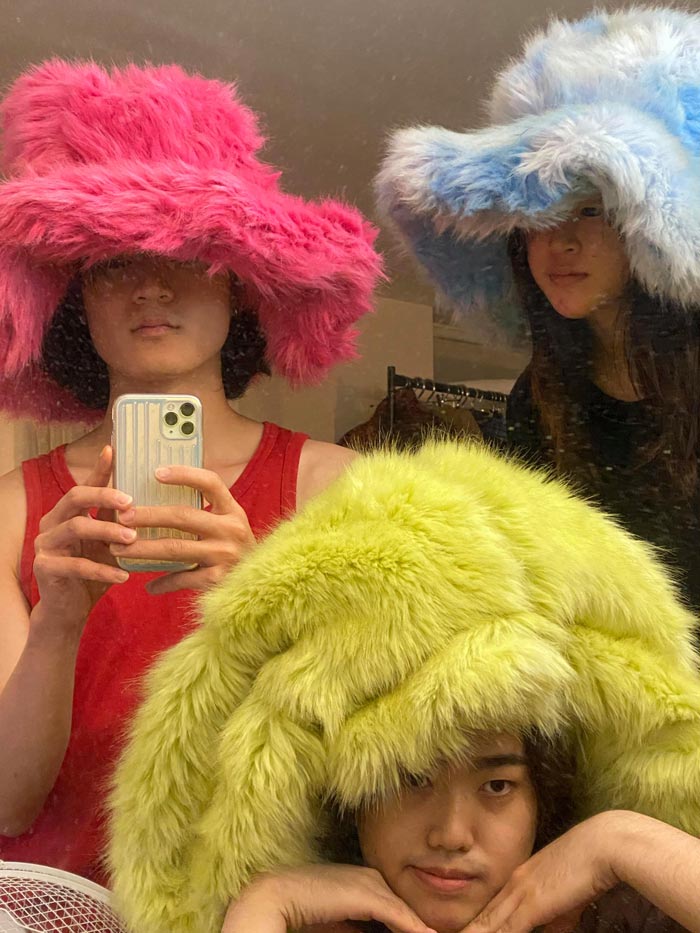Shammi and Leeann caught up over e-mail to discuss the emerging designer’s eclectic universe and childhood memories.
All the colourful images you’ll find in this interview have been provided by Leeann.
Leeann Huang takes uncommon and innovative materials and integrates them into garments using traditional couture techniques such as embroidery and beading. After moving to London from LA to start studying at CSM, Leeann became animated by utopian futures and alluring imagery, coming from her earliest childhood memory of her favourite TV shows, which included The Powerpuff Girls and Totally Spies! basing her graduate collection on her “plastic fantastic childhood fantasy of the future”.
Looking at female action heroes crushing their enemies and systematic oppression – an embodiment of Leeann’s female-centric future fantasy transcending the 60’s into future-thinking – the Taiwanese designer calls on her own heroes in the form of her mother and grandmother. Leeann would watch her grandma – a seamstress – make costumes for her mum, a ballroom dancer inspiring her flamboyant creative process.
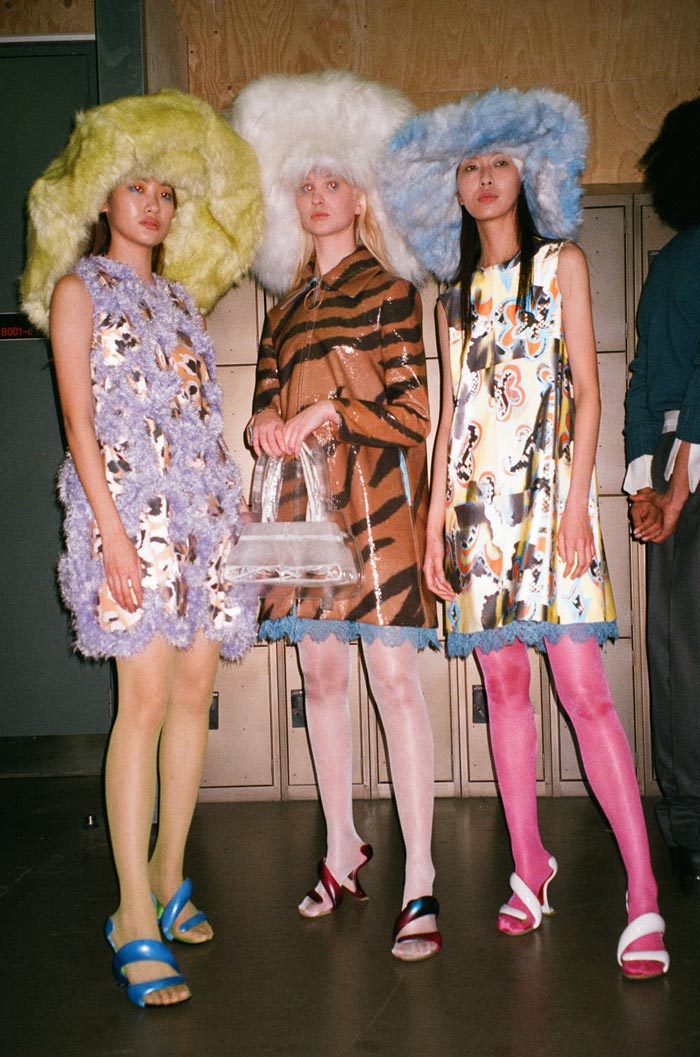
Leaann’s childhood experiences have certainly built up a clear distinctive shape in her garments, creating a surfeit of sculptural moulds onto her dresses. Mary Quant-inspired garments being reconstructed out of everything from recycling bottles to a hypothetical feast, made up of real edible food. Huang’s obsession with creating a huge feast, was built up from her experiences working in a cake shop – creating a texture mould that helped her mould chocolate and strawberry jelly into cable-knitted garments. Dresses betoken in cable knits crafted from chocolate, and jewellery made using glazed oranges, a result of a nostalgic trip into the future.
Here, I speak to Huang about her idealistic avant-garde approach, her obsession with deconstructing food, and how she picked up on a recurring 60’s aesthetic with her own futuristic twist.
Shammi Popat
Leeann Huang
Could you give me an outline of your background and heritage?
I was born and raised in the San Gabriel Valley. My parents both came from Taiwan in the 80’s, so I’m second generation immigrant. The area I’m from is such a heavily Asian and Hispanic bubble, so I never really felt that I had to question my cultural identity until I moved to London. My mom is a musician and dancer, while my dad sells paper, and my brother works in philanthropy. Our household is all quite independent and adventurous. I always enjoyed being crafty since I was young and working in fashion fit that ambition and lifestyle I wanted.
My grandma was a kooky doll-maker and seamstress and my wild and fashionable mom makes her own ballroom gowns. They taught me every technique from embroidery to crochet, so I think that’s why my work has always heavily revolved around craft and garments. They also unintentionally passed down their colourful, funny style to me.
I think coming from quite a structured and career-minded Asian community and upbringing to a very free-form and subjective art school helped free me.
You studied at Central St Martins, what was your experience during this time moving to London? How did it help you as a person and a creative and how did that experience inspire you into your future endeavours, specifically becoming an innovative exciting designer?
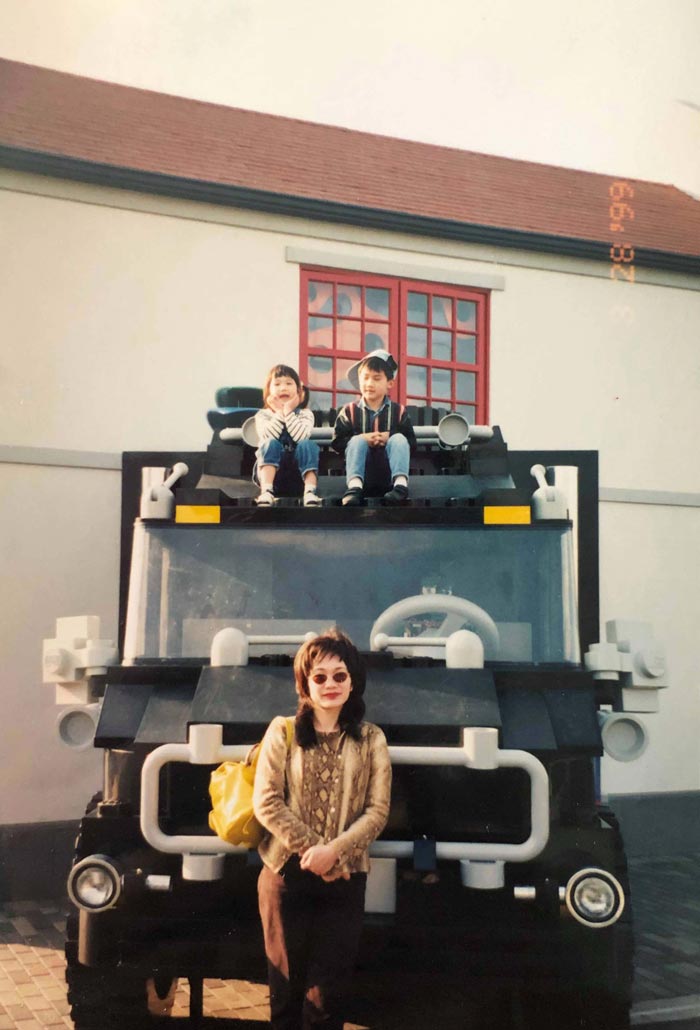
I think moving alone to a new country is rough, especially when you’re 17. I grew up very quickly and learned harsh lessons about who I am, what I want and how I present myself as a designer. Being at CSM pushed me to be more open-minded and more myself. Everyone at the school is so different, quite wild and exciting in their own way – it makes you want the same for yourself.
I think coming from quite a structured and career-minded Asian community and upbringing to a very free-form and subjective art school helped free me. I’m naturally very colourful with a lot of humour in my work, so being in London and at CSM helped me explore and define that. Rather than focus on a “right” way of doing fashion, I did things the way that was right for me.
You released your MA collection early on this year, could you talk me through the message you wanted to convey for this collection and your design process, sourcing and reconstructing of materials resulting in your utopian aesthetic?
My collection is based around my plastic fantastic childhood fantasy of the future. I’ve always been enthralled by the seductive imagery and utopian future portrayed in the female action hero TV shows like The Powerpuff Girls, Charlie’s Angels, and Totally Spies!. These impeccably dressed women attacked their enemies and systemic oppression with camp positivity and girl power.
Transcending nostalgia for the past and overcoming anxieties about the future, this collection turns a female-centric future fantasy into a reality. All the garments and accessories are made from some form of recycled plastic, whether it be vacuum-formed recycled bottles that are used as beads for embroidery or trompe l’oeil handbags, fluffy-faux furs made from recycled fishnets or prints on recycled raincoat TPU. Many of the prints and fabrics have a holographic or colour-changing lenticular effect to imitate a flashing television when in motion. I oversized different hats and covered them in hand-dyed faux fur. Garments are constructed together with clear topstitch or fluffy crochet. They are based on a 60’s mod cut, an era heavily rooted in future-looking and seamless modernism. The cut is simple, comfortable, free-moving, and universally fitting. Familiar clothing with a surreal textile application.
Transcending nostalgia for the past and overcoming anxieties about the future, this collection turns a female-centric future fantasy into a reality.
A lot of your garments are constructed with detailing of edible foods, what was it about food that inspired your design process so much?
My BA 2018 graduate collection was very food-themed, whereas my MA graduate work did derive some shapes and ideas from food packaging. I’m obsessed with food and the grand visuals of food as well as unexpected ways to use material, so I always like to bring those ideas into my work.

Leeann’s favourite Cake Shops in London
• Wa Cafe 📍 5 New Row, WC2N 4LH
• Ottolenghi 📍 Several locations
• Kova 📍 9 St Anne’s Ct, W1F 0BB
How did your research process of understanding your heritage affect your view on the fashion industry and did this give you the motivation to give new life to waste and dead stock materials (or food) in an attempt to stop fast fashion brands continuing to take advantage of the East?
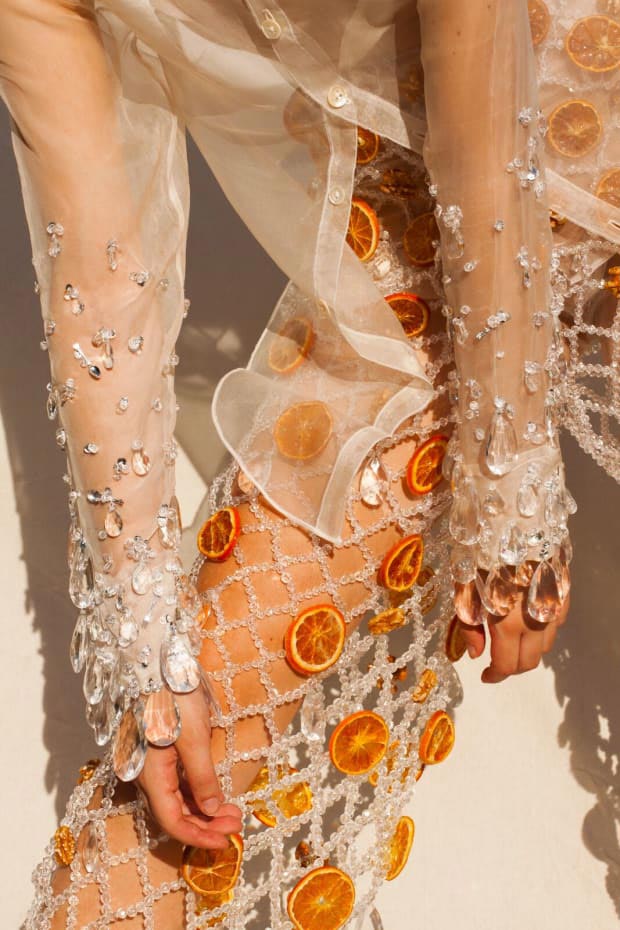
I for sure hope as the fashion industry progresses, we should stop looking down on production in Asian countries such as China or India. There are so many artisans and even just material and production experts, as well as machinery and sophisticated manufacturing. I hope these are promoted and utilized more over the exploitative fast fashion and slave labour taking advantage of desperate people. This way people can live more fair and dignified lives.
Through my research, I found out the majority of the world’s plastic is recycled in China. Not only that, there are still troves of deadstock materials around the world to be used. I just produce my work as I normally would, but only source via circular design or sustainable sources, and that in itself give these materials more use and life.
I for sure hope as the fashion industry progresses, we should stop looking down on production in Asian countries such as China or India.
How have you been coping with everything being very digital focused at the moment? Has it been hard for you as a designer in conveying the message of your work digitally, or has it been something which has given you time to reflect on your work and the industry as a whole?
It has been for sure strange. None of the digital fashion appeals to me as much as it used to. For example, even before I would see most shows and shoots digitally anyway before they hit stores or exhibitions, but now doesn’t seem like it’s the right time, or it doesn’t feel as exciting or real. It’s nice to see how creative some people are being with their platforms or presentations, but I think it’s also great to just have a break from it all and try and just help each other through everything going on right now.
How did your experience of interning at Margiela alongside the great Galliano shape you as a designer today?
I think I learned a lot about obsession, work ethic, and editing. Working there was non-stop work, bouncing ideas, creating and researching. I constantly think back to everything he and the amazing people guided me through whether it be work, work-life balance or what I want to achieve in life.
I get the most excited working with friends and am working with a few of them now on new things to come in LA.
You recently collaborated with hat designer Benny Andallo for your graduate collection, a collaboration that perfectly suited each other’s flamboyant nostalgic style. Could you tell me more about this collab? Are there any other brands in the distant future that you love and could see yourself collaborating with?
It was really wonderful working with Benny as we immediately gelled and became friends. I never worked with someone so quickly and well. He’s so talented and genuine, I’m so glad to have met and to continue to work with him. I get the most excited working with friends and am working with a few of them now on new things to come in LA.
You have been recently stocked on APOC store. How have you found this process and experience as a freelance designer working with retailers looking to stock your products?
I was really attracted to APOC as it owned by mutual friends with a community and platform for independent designers and artists. I think so far my experience with retailers even large has mostly revolved around small quantities so it’s all been quite manageable and straight-forward. My practice is still in it’s beginning stages and it’s all been a learning process.
What’s next for Leeann Huang?
New work and developing a small business. Job prospects are slim as many friends are being furloughed or laid off. Now is the time to work on my own practice while I can.
Shammi Popat (@shammipopat) is a London-based fashion writer and stylist. He is interested in rethinking modern day style with an eye for detail and child-like curiosity for the future of fashion. Read all of Shammi’s pieces here.


